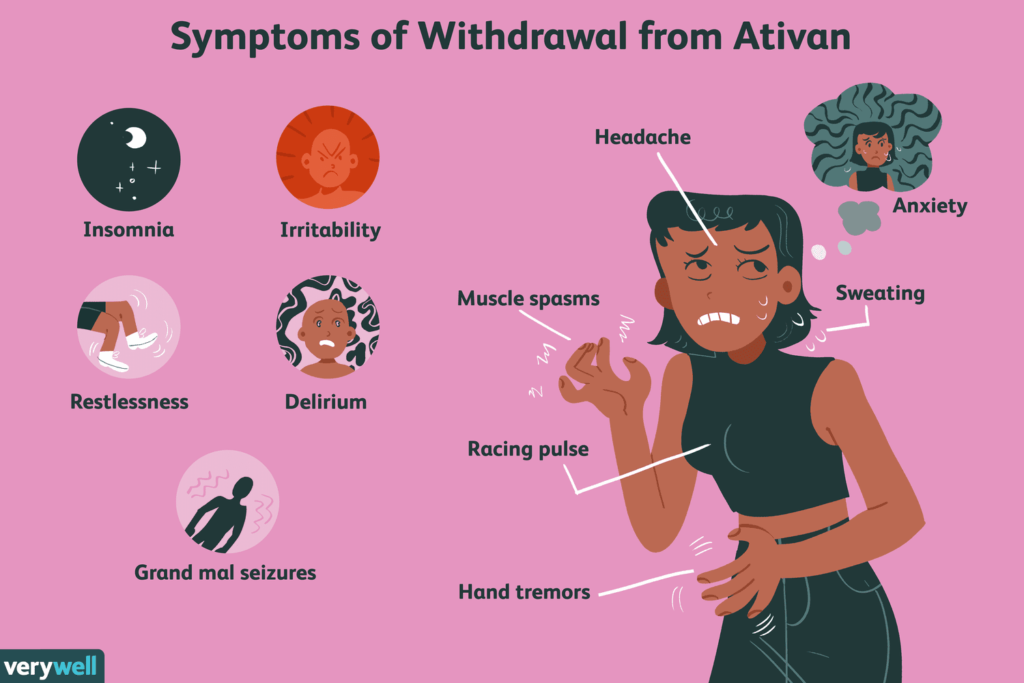Managing Ativan (lorazepam) withdrawal symptoms in children can be particularly challenging due to their developing systems and heightened sensitivity to medications. Below are some expert strategies commonly recommended by healthcare providers for managing this process:

1. Gradual Tapering
- Slow Reduction of Dosage: One of the most important strategies is to gradually taper the dosage of Ativan to prevent severe withdrawal symptoms. Abrupt discontinuation can lead to intense symptoms, so it’s essential to follow a physician’s guidance on the tapering schedule. The taper might be extended over weeks or even months, depending on the child’s dependency level.
2. Multidisciplinary Care
- Pediatrician and Psychiatrist Collaboration: Withdrawal from Ativan often requires the involvement of multiple healthcare providers. A pediatrician, psychiatrist, and possibly a pharmacist should work together to monitor the child’s physical and mental health during the withdrawal process.
- Therapeutic Support: Behavioral therapy, cognitive-behavioral therapy (CBT), or play therapy may be employed to help the child manage anxiety or other underlying issues for which Ativan was originally prescribed.
3. Symptom Management
- Physical Symptoms: Withdrawal symptoms may include headaches, dizziness, nausea, muscle aches, and restlessness. Over-the-counter medications or specific treatments (e.g., hydration, proper nutrition) can help manage these physical symptoms.
- Emotional Symptoms: Anxiety, irritability, and mood swings are common. Providing a supportive and calming environment can help the child feel more secure. Distraction techniques, relaxation exercises, and consistent routines may also reduce emotional distress.
4. Alternative Medications
- Substitution with Longer-Acting Benzodiazepines: In some cases, healthcare providers may substitute Ativan with a longer-acting benzodiazepine like diazepam (Valium) to make the tapering process more manageable. This approach is sometimes used when children experience severe Managing Ativan withdrawal symptoms .
5. Nutrition and Hydration
- Balanced Diet: Ensuring that the child receives a balanced diet rich in vitamins and minerals, especially magnesium, can help with anxiety and physical withdrawal symptoms.
- Adequate Hydration: Keeping the child well-hydrated can help alleviate some of the physical symptoms associated with Ativan withdrawal, such as headaches and dizziness.
6. Sleep Support
- Sleep Hygiene: Withdrawal can cause disruptions in sleep. Maintaining a consistent sleep schedule, reducing screen time, and creating a calming bedtime routine can promote better sleep.
- Melatonin or Herbal Remedies: In some cases, melatonin or certain herbal supplements (like chamomile or valerian root) may be recommended to help the child sleep during withdrawal. This should only be done under medical supervision.
7. Close Monitoring
- Regular Check-ups: Frequent follow-up appointments with the healthcare provider are essential to monitor the child’s progress, adjust the tapering schedule, and address any emerging withdrawal symptoms.
- Parental Involvement: Parents or caregivers should be involved in the process and trained to recognize signs of distress, worsening withdrawal symptoms, or any side effects that need immediate attention.
8. Emotional and Social Support
- Family and Social Network: Providing emotional support and reassurance is critical. Children may feel scared or anxious during withdrawal, so maintaining a stable, loving environment can help ease the process.
- Peer Support Groups: Although less common for children, peer support groups (specifically for families dealing with pediatric medication withdrawal) can offer additional emotional support for both the child and the family.
9. Gradual Return to Normal Activities
- Slow Resumption of Daily Routines: Depending on how the child feels during withdrawal, they may need a gradual return to their usual school or social activities. Flexibility is key during this time, allowing the child to adjust at their own pace.
In all cases, it’s crucial to work closely with healthcare providers to ensure the child’s safety and well-being throughout the withdrawal process. Do you have a specific case or question regarding withdrawal that I could assist with further?